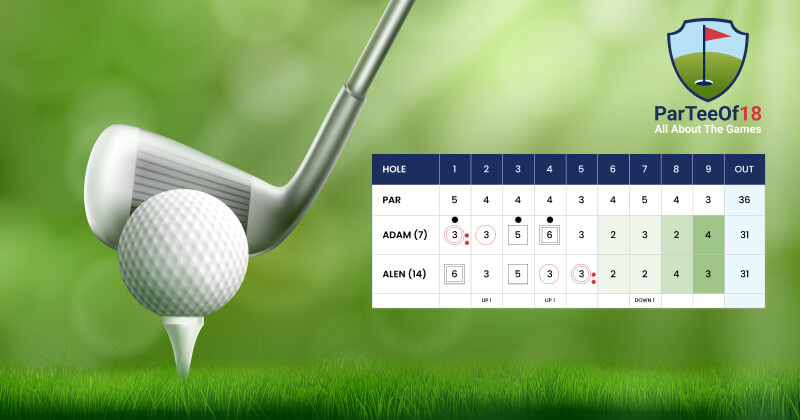Learning to play golf as a beginner can be both overwhelming and exciting. New players are frequently perplexed as to what the best golf clubs for beginners are. The right golf clubs can boost your confidence and improve your game. For beginners, choosing the best golf club set is about more than just quality or price; it’s also about striking the right balance between comfort and performance. In this blog guide, we’ll go over everything you need to know before purchasing golf clubs, as well as how to choose golf clubs for beginners.
We will break it down for you, from a full set to an affordable option, so you can choose what works best for your goals and budget. Understanding the fundamentals and key features will help you avoid common errors and choose the best golf clubs for beginners. Golf is a rewarding sport, and the right clubs can make your experience more enjoyable and fun.
Why the Right Golf Clubs Matter for Beginners
If you’ve ever borrowed a friend’s clubs or rented a mismatched set, you probably noticed how difficult the game feels. That’s because not all clubs are built the same. Clubs designed for professionals often have smaller sweet spots, less forgiveness, and heavier shafts. For a new player, this means more mishits and frustration.
Beginner-friendly clubs are engineered with forgiveness in mind. They feature larger clubfaces, lighter shafts, and more flexible designs to help you get the ball airborne with less effort. This doesn’t just improve your performance—it boosts your confidence. When you hit cleaner shots more often, you’re more likely to enjoy the game and stick with it.
Choosing the best golf clubs for beginners ensures you’re not fighting against your equipment. Instead, you’ll have tools that support your growth, make practice sessions more rewarding, and reduce the steep learning curve of golf.
What to Look for in Beginner Golf Clubs
Choosing golf clubs for the first time can feel overwhelming, especially with so many brands and models available. Beginners don’t need every feature professionals rely on—instead, focus on clubs that make the game simpler and more forgiving. Here are the most important factors to consider when picking the right set.
Forgiveness
Forgiveness refers to how well a club performs on mishits. Beginner-friendly clubs have larger sweet spots, cavity-back designs, and perimeter weighting. These features minimize the impact of off-center strikes, helping your shots travel straighter and farther. For a beginner, forgiveness is crucial to building confidence and reducing frustration during practice and play.
Shaft Flex and Material
The shaft directly influences swing speed and ball flight. Graphite shafts are lighter and better suited for beginners, while steel shafts offer more control but require greater strength. Flex ratings (regular, senior, or ladies’) are also key—more flexible shafts help generate distance with less effort, making them ideal for players still developing swing speed.
Club Weight and Balance
Lightweight clubs make it easier to practice for longer without fatigue. Balanced designs improve control, ensuring smoother swings and consistent contact. Clubs that are too heavy or unbalanced can discourage beginners and lead to poor habits. The right weight helps new players maintain rhythm, timing, and comfort as they build confidence on the course.
Loft and Launch Angle
Higher lofts make it easier to lift the ball into the air, which is often a challenge for beginners. Drivers with 10–12 degrees of loft and irons with more forgiving angles improve launch and distance. A higher launch angle reduces slices or worm burners, making the game more enjoyable and progress more noticeable.
Grip Size and Comfort
The grip is the golfer’s only connection to the club, making comfort essential. Standard-size grips usually suit most beginners, but oversized grips can help those with larger hands or struggling with control. Soft, tacky grips provide better hold and reduce tension in the hands, resulting in smoother, more consistent swings for new players.
Key Features to Look for in Beginner Golf Clubs
Beginner golfers need clubs that simplify the game and build confidence rather than adding difficulty. The right features can make a huge difference in accuracy, distance, and overall enjoyment. Below are the most important features every new golfer should look for when choosing their first set of clubs.
Large Sweet Spot
A larger sweet spot gives more margin for error on off-center hits. This design ensures that even slightly mishit shots still travel straight and achieve reasonable distance. For beginners, it reduces frustration and helps build consistency, turning what could be discouraging mishits into playable shots that keep confidence high on the course.
Cavity-Back Irons
Cavity-back irons shift weight around the perimeter of the clubhead, increasing forgiveness and stability. They are designed to provide more control and distance even with imperfect contact. Beginners benefit from this design because it balances power with ease of use, allowing players to make steady improvements while enjoying a smoother learning curve.
Graphite Shafts
Graphite shafts are lighter than steel, making them easier to swing and control for beginners. They also reduce vibrations on mishits, creating a more comfortable experience. Their flexibility helps generate extra distance with slower swing speeds, which is particularly helpful for new golfers still building strength and consistency in their swings.
Higher Loft Angles
Clubs with higher lofts help lift the ball into the air more easily, which is a common challenge for beginners. A driver with 10–12 degrees of loft or irons with more lofted faces encourages higher, straighter shots. This feature improves distance and trajectory, giving new players more satisfying results early in their golf journey.
Lightweight Design
Lightweight clubs reduce fatigue and allow for longer practice sessions. They also improve swing speed and rhythm, helping beginners develop proper form without overexertion. A lighter design makes the game feel less intimidating, allowing new golfers to focus on accuracy and consistency rather than struggling with clubs that feel too heavy or awkward.
Essential Clubs Every Beginner Needs
When starting golf, you don’t need all 14 clubs in the bag. Instead, focus on a core selection that covers the most common situations on the course. This keeps the game simple, affordable, and less overwhelming. Below are the must-have clubs every beginner should start with for a balanced and effective setup.
Driver
A beginner-friendly driver has a large head, lightweight shaft, and high loft (10–12 degrees). It makes tee shots easier by helping the ball travel straighter and farther, even on mishits. The driver gives new players confidence off the tee box and helps them build consistency in one of the most challenging parts of golf.
Fairway Wood or Hybrid
Fairway woods and hybrids are more forgiving alternatives to long irons. They are easier to hit from the fairway and rough while still offering good distance. For beginners, a 3-wood or a hybrid (like 4H or 5H) works best, as these clubs provide versatility and simplify approach shots on longer holes.
Mid-Irons (6, 7, 9)
Mid-irons are essential for approach shots from the fairway or rough. They combine accuracy with distance, making them versatile for many situations. Beginners benefit from irons with cavity-back designs and wide soles, which help with forgiveness and lift. A 6, 7, and 9 iron set provides a manageable range without overwhelming choices.
Wedge (Pitching or Sand)
Wedges are crucial for short shots around the green and getting out of bunkers. A pitching wedge is versatile for chipping, while a sand wedge offers extra loft for tough lies. Beginners need at least one wedge to practice precision and develop control in the short game, which makes up most golf shots.
Putter
The putter is the most-used club in any golfer’s bag. A beginner-friendly putter should have a simple, balanced design with a comfortable grip. It helps new players develop accuracy and feel on the green, where small improvements make the biggest difference. Mastering the putter early can significantly lower scores and build confidence.
Best Golf Club Sets for Beginners
A well-structured starter set makes the learning process much smoother for new golfers. These sets are designed with forgiveness, lightweight materials, and balanced club selections that suit beginners perfectly. Below are some of the best golf club sets for beginners, offering a mix of affordability, quality, and performance to help you enjoy the game from day one.
Callaway Strata Complete Set
The Callaway Strata is one of the most popular starter sets for beginners. It includes a driver, fairway woods, hybrids, irons, wedges, and a putter—everything you need to get started. Known for forgiveness and lightweight design, it’s ideal for new golfers who want a complete package without overcomplicating their first purchase.
Wilson Profile SGI Set
Wilson’s Profile SGI set is affordable and beginner-friendly, making it a great entry-level choice. With perimeter-weighted irons, an oversized driver, and a forgiving putter, this set offers excellent balance and control. It’s tailored to provide new players with confidence while learning and is available in different configurations to suit height and swing preferences.
Cobra Fly XL Complete Set
The Cobra Fly XL offers a slightly more premium option while still catering to beginners. Its clubs are designed for distance and forgiveness, helping new golfers hit higher and straighter shots. With lightweight graphite shafts and easy-to-launch woods and hybrids, this set is perfect for players who want quality gear that can grow with them.
Common Mistakes Beginners Make When Buying Clubs
Buying your first set of clubs is exciting, but many beginners end up with the wrong equipment due to lack of knowledge or misleading marketing. Avoiding these common mistakes will save money, reduce frustration, and help you learn faster. Here are the pitfalls every new golfer should watch out for when choosing their clubs.
Buying Advanced Clubs Too Early
Clubs designed for professionals often have smaller sweet spots and require more precision. Beginners who start with these clubs struggle with consistency and quickly get discouraged. It’s better to choose forgiving, beginner-friendly designs that help you learn proper technique and build confidence before upgrading to more advanced equipment later on.
Ignoring Shaft Flex and Length
Shaft flex and length significantly affect swing performance. Beginners often overlook these details, ending up with clubs that are too stiff or too long. This makes it harder to generate distance or control the ball. Choosing the right shaft flex and length ensures smoother swings, better accuracy, and a more enjoyable learning experience.
Focusing Only on Brand Names
Big-name brands may look appealing, but they don’t always guarantee the best fit for beginners. Many golfers waste money chasing logos instead of features. A lesser-known brand offering lightweight, forgiving clubs may serve a beginner better than premium pro-level gear. Prioritizing playability over branding ensures better results and a smarter investment.
Skipping Club Fitting or Testing
Some beginners buy online or in-store without testing clubs first. This leads to mismatched equipment that feels uncomfortable and impacts performance. Even a quick demo at a driving range or shop can make a big difference. Testing helps you find clubs that suit your swing and ensures a smoother path to improvement.
Tips for Choosing the Right Set for You
When testing your clubs at the range, try pairing practice with a golf scoring app. These apps track strokes, distances, and accuracy, giving beginners valuable feedback that complements the performance of their clubs. Finding the right beginner golf set isn’t about picking the most expensive option—it’s about matching clubs to your needs, budget, and goals. The right choice will help you enjoy the game more, improve steadily, and avoid unnecessary frustration. Here are some practical tips to guide you in selecting your first set.
Set a Realistic Budget
Golf clubs can get expensive quickly, but beginners don’t need to overspend. A solid starter set provides everything you need without breaking the bank. Focus on value rather than luxury, and remember—you can always upgrade later. Setting a budget helps you balance affordability with quality, ensuring you get the right clubs for your stage.
Try Before You Buy
Whenever possible, test clubs at a local golf store, simulator, or driving range. This helps you feel the weight, grip, and swing performance before committing. Many shops offer fitting sessions, which are especially useful for beginners. Trying clubs first ensures comfort and confidence, making it easier to stick with the game.
Consider Pre-Owned Options
A lightly used or refurbished set can provide excellent quality at a fraction of the cost. Many golfers upgrade quickly, so beginner-friendly sets often hit the resale market in great condition. Choosing pre-owned lets you save money while still getting reliable clubs, leaving more room in your budget for lessons or practice rounds.
Think About Future Upgrades
You don’t need a complete 14-club set from day one. Start with the essentials—driver, fairway wood or hybrid, a few irons, wedge, and putter. As your skills improve, you can add specialty clubs or upgrade to higher-quality options. This gradual approach keeps the game simple while giving you room to grow into your equipment.
Conclusion
Getting started in golf is exciting, and your first set of clubs plays a huge role in your journey. By focusing on forgiveness, weight, shaft flexibility, and comfort, you’ll avoid common mistakes and set yourself up for success.
Whether you choose the Callaway Strata, Wilson SGI, or Cobra Fly XL, remember that the best golf clubs for beginners are the ones that make you feel confident, comfortable, and motivated to keep improving.
The game of golf is about progress, not perfection. With the right tools in hand, you’ll enjoy learning, hitting cleaner shots, and building a love for the sport that lasts a lifetime.
FAQs
1. What are the best golf clubs for beginners?
The best golf clubs for beginners are those designed with forgiveness, lightweight shafts, and larger sweet spots. Popular choices include the Callaway Strata, Wilson Profile SGI, and Cobra Fly XL. These sets make it easier for new players to hit straighter shots and build confidence while learning the game.
2. Do I need a full set of 14 clubs as a beginner?
No, beginners don’t need all 14 clubs. A starter set with essentials—a driver, fairway wood or hybrid, a few irons, a wedge, and a putter—is more than enough. This keeps the game simple and affordable while allowing you to focus on consistency before adding specialty clubs later.
3. Should I buy new or used golf clubs as a beginner?
Both options can work. New clubs give you the latest technology and a fresh start, while used clubs are more affordable and still perform well if they’re in good condition. For beginners, a quality pre-owned set can be a smart, budget-friendly way to get started without overspending.
4. How much should I spend on my first set of golf clubs?
Beginners should expect to spend between $250 and $600 on their first complete set. Spending more isn’t necessary in the early stages, as most entry-level sets are designed for forgiveness and ease of play. Once you improve your skills, you can upgrade to higher-end equipment tailored to your swing.




